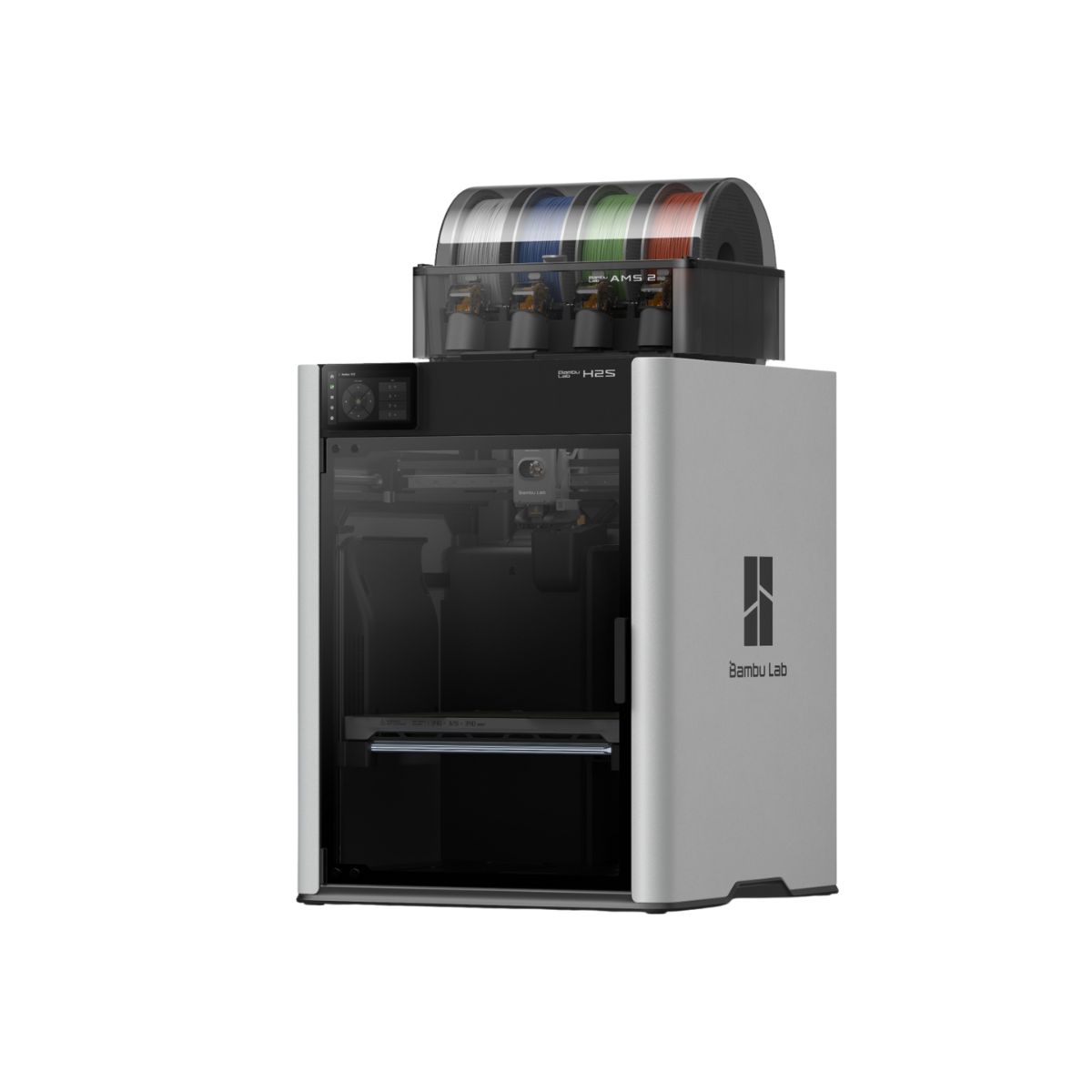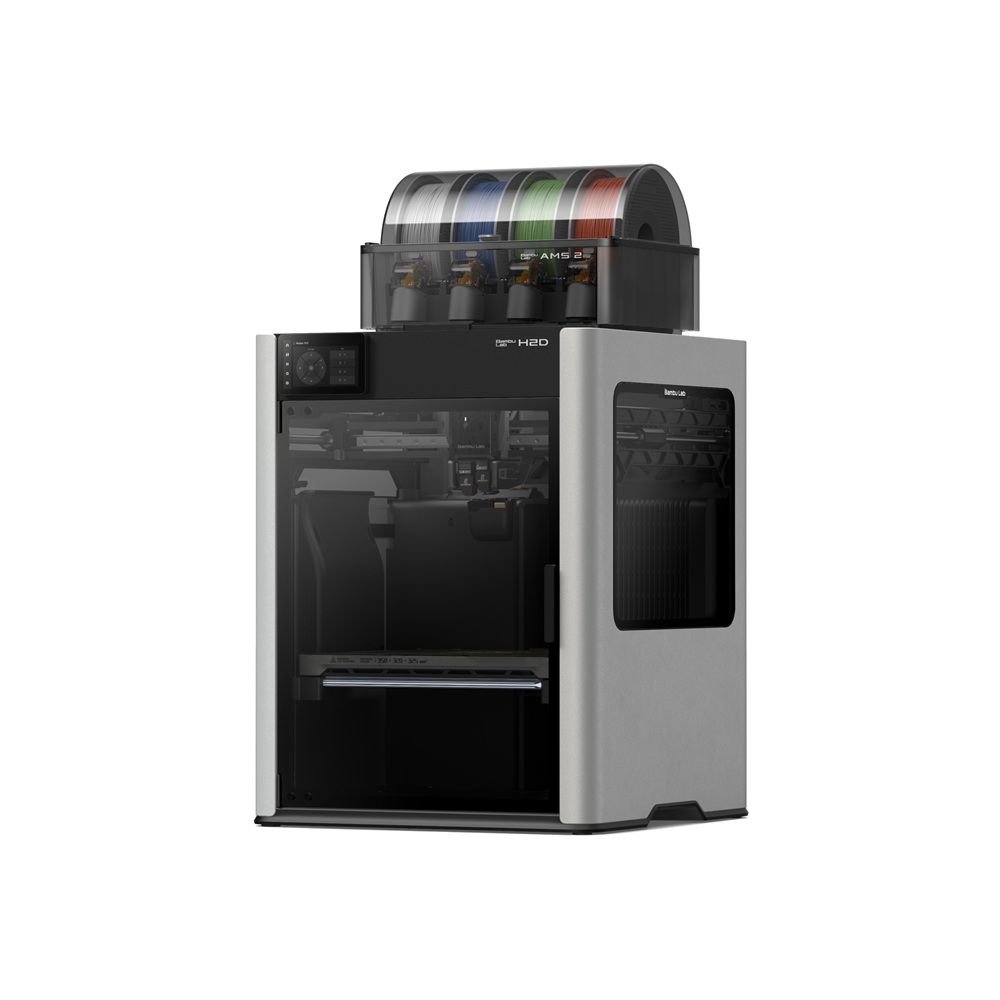Compare H2S Combo vs H2D
Comparison between the best 3D printers
Choose the best 3D printer at the best price. The cheapest 3D printers are here.
Buy a 3D printer here with 3D Fila.
 |
 |
|
| Model | H2S Combo |
H2D |
| Printing Material | Filament | Filament |
| Buy Filament for Bambu Lab H2S Combo | Buy Filament forBambu Lab H2D | |
| Estimated price | $1499,00 | $1899,00 |
| Manufacturer | Bambu Lab | Bambu Lab |
| Release Year | 2025 | 2025 |
| Print Volume [mm] | 320x340x340 | 350x320x325 |
| Printer Size [mm] | 492x514x852 | 492x514x626 |
| Weight [kg] | 32,5 | 42,3 |
| Power Loss Recovery | YES | YES |
| Enclosed printer | YES | YES |
| Bed Leveling | Automatic | Automatic |
| Filament End Sensor | YES | YES |
| Bed type | Heated | Heated |
| Power supply system | Direct Drive | Direct Drive |
| Standard nozzle | 0,4 | 0,4 |
| Maximum Nozzle Temperature [°C] | 350 | 350 |
| Maximum Bed Temperature [°C] | 120 | 120 |
| Maximum printing speed [mm/s] | 1000 | 600 |
| Filament holder | YES | YES |
| Camera for supervision | YES | YES |
| Recommended filaments | ABS, PLA, PETG, PET, TPU, PA, ABS, ASA, PC, PLA-CF, PA-CF, PET-CF | PLA, PETG, ABS, ASA, TPU, PVA, Nylon (PA) |
| Recommended slicers | Bambu Studio | Bambu Studio |
| Maximum Resolution [mm] | 0,1 | 0,01 |
| Processor | ||
| Display | Touchscreen 5'' | Touchscreen 5'' |
| Power Supply | 330 W RMS | |
| Connectivity | USB, Wifi | Wifi, Bambu bus, Cartão SD |
| Operating systems | Windows, Linux e Macbook | Windows, Mac, Linux |
| Date of registration in the system | 2025-10-10 | 2025-03-31 |
| Release date | 2025 | 2025 |
| Extra features | Enclosed CoreXY (340×320×340 mm) with active chamber up to 65 °C, 350 °C hotend, 120 °C bed. <50 um precision (Vision Encoder) and Auto Hole/Contour Compensation. 3 cameras + 23 sensors with AI and pre-flight checks. AMS 2 Pro: drying with auto vent, spool rotation, and RFID; multicolor ready. Auto-leveling, active vibration compensation, high-torque servo extruder, and stabilized flow for high speed and top quality. | Bambu Labs H2D combines high-speed 3D printing with a chamber heated up to 65 °C, dual extrusion with automatic nozzle switching, an AMS for filament drying and exchange, and AI sensors that detect failures. It offers optional laser and digital cutting capabilities, features intelligent calibration through computer vision, vibration control, enhanced fire safety, and real-time camera monitoring. |
| Support for multiple colors and materials (AMS and CFS) | YES | YES |
Notes * |
||
| Cost-benefit | 7 / 10 | 7 / 10 |
| Hardware | 8 / 10 | 8 / 10 |
| Tela | . | . |
| Print volume | 4 / 10 | 4 / 10 |
| Performance | 8 / 10 | 5 / 10 |
Conclusion |
| In comparing the Bambu Lab H2S Combo and H2D 3D printers, several key features and specifications stand out that can help potential buyers determine which model best suits their needs. Both printers are manufactured by Bambu Lab and feature similar core functionalities, including automatic bed leveling, power loss recovery, and enclosed designs, making them suitable for a variety of printing environments. The H2S Combo offers a compact design with slightly smaller print volume specifications compared to the H2D, but it compensates with a higher maximum printing speed of 1000 mm/s, which can lead to faster project completion for users. Additionally, the H2S Combo maintains a lighter weight, which may be advantageous in terms of installation and mobility. On the other hand, the H2D features a marginally larger printing volume and a higher resolution capability, which could be appealing for users focused on high-fidelity prints. The H2D also supports a broader range of materials, making it a versatile option for those looking to explore different filament types. When considering price, the H2S Combo is the more budget-friendly option, which could sway cost-conscious buyers. Nonetheless, both models are well-equipped with advanced technology and offer substantial features for serious 3D printing enthusiasts. In conclusion, if speed and a lower price point are priorities, the H2S Combo is the ideal choice. Conversely, if maximum print volume and higher resolution capability are paramount, the H2D represents a solid investment. Ultimately, the decision will depend on specific user requirements and preferences in 3D printing capabilities. |

